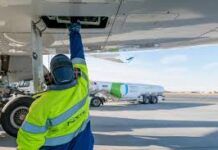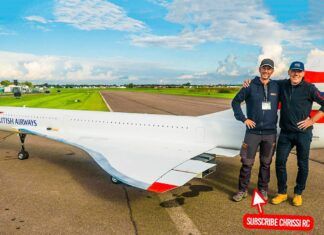Demise of 100LL
I just got done reading Lance Nuckoll’s letter regarding the highly uncertain future of 100LL (AVmail, July 7). Given that lead is considered bad news (you can’t even use it in solder for electronics anymore), 100LL isn’t going to be around forever.I would like to offer a suggestion as to how to get around this problem. My solution will require a little flexibility on part of the EPA and those concerned about our environment, but here goes:I suggest we bring back methyl tertiary butyl ether (MTBE). I realize this substance has been banned from autogas owing to contamination of groundwater in some areas, but a lot of this was due to leaking storage tanks or highly inefficient, two-stroke, outboard motors.If MTBE is brought back for avgas, airports will have to take precautions not to let storage tanks leak. In addition, pilots will have to avoid draining avgas containing this substance on the ground. (Years ago, when I took flight lessons, I remember draining avgas into a beaker as a preflight precaution to get rid of water that inevitably makes its way into a plane’s wing tanks).For some applications, such as non-cross-country flight instruction, maximum range isn’t required. Here, we could consider ethanol as fuel.Given threats to general aviation such as airport closings and fuel prices rising all the way to the tropopause, a little flexibility from the EPA and environmentalists is called for.Alex Kovnat
Lance Nuckolls’ comment regarding tetraethyl lead (TEL), “… the only remaining demand is from the users of smaller, piston-engine aircraft …” is erroneous. The vast majority of smaller aircraft do not need leaded fuels at all. It is larger, turbocharged, higher-performance, piston aircraft that need leaded fuel (higher octane fuels). And, “larger Cessnas …” etc., are not the only airplanes out there. Perhaps he’s never heard of DC-3s, Twin Beechs, Lockheed/Lodestar, B-17/24/25, AT-6 … the list is long.I personally recall the 1950s when one could pull up to the local Conoco or Gulf service station and “dial in” the octane-level desired at the retail pump. The customer was basically selecting a blend of low- and high-leaded fuel at a ration he desired. I think avgas suppliers should let the user choose how much, or how little (none?) he desires at the pump.If base-stock avgas is 82 octane, then why should my Cessna 170 need any hazardous, polluting, engine-damaging TEL at all?George Horn
Fuel Prices
The notion that speculators can prop up the cost of oil or any other commodity for any length of time is pure nonsense (AVwebFlash, July 16) … unless, of course, they have a billion or so barrels of oil stashed away behind their mansions. High prices are caused by a number of factors, including loss of production capacity around the world, increasing costs for exploration and production, growing demand from the developing world, and supply disruptions due to political tensions in the Middle East and insurgencies in several African countries.In his cover note, Phil Boyer noted that “something needed to be done.” That something includes developing alternatives and conservation measures few Americans were willing to take until the price of gasoline hit $4. It should not include taking potshots. General aviation consumes relatively small amounts of fuel, but it is demand for fuel nonetheless. Perhaps we should be grounding our planes for the national good so we’re not shipping money abroad to hostile regimes instead of complaining about high prices.S.O.S. is a witch hunt, plain and simple.Jack Ellis
Cluster-Balloon Story
I was very disappointed in your coverage of Kent Couch’s recent cluster-balloon flight (AVwebFlash, July 6).I am not surprised that the popular media reports only the “Ain’t it cute?” aspects of the story. But I am stunned that a supposedly more sophisticated outlet such as AVweb would fail to mention that these flights are reportedly made at altitudes that require the use of oxygen, in IFR conditions, with no contact with ATC, and (unless 245 pounds of his reported 400-pound craft is ballast bags) by an unrated pilot in an uncertified aircraft. At the very least, your publication should give passing mention of these safety matters.Further, the fact that such careless flying sometimes ends in tragedy (as the subsequent article on the death of the Brazilian priest exemplified, AVwebFlash, July 6) does not make it clear that cluster flights can readily be accomplished legally and safely by conscientious people. In particular, safe cluster flights are made regularly made by John Ninomiya and as a one-off thing by other pilots (e.g., see this page).As far as I can tell, Mr. Couch’s flights aren’t accomplishing anything particularly new or different. Yet one would never know it from reading your story.I am saddened that AVweb joined this chorus of mindless and unquestioning media cheering. In doing so, you failed your readers.Dan Nachbar
Freight Feeder
According to the Freight Feeder Web site, the FF4000 is not a single tail-mounted turboprop (AVwebBiz, July 8), but a twin like the 5000, just two containers shorter.Wash Phillips
Green Prize
The Department of Transportation is holding a contest for a jet fuel to be available by 2011/2016 (AVwebFlash, July 11). Do these people know how to read? Mary Peters has in the past advocated for Fischer-Tropsch fuel and the Air Force has proven it in the B-52, C-17, and the B1B. What else is necessary?As the domestic airlines fall by the wayside, and layoffs grow, the people at the Department of Transportation keep drawing their paychecks, and doing nothing to alleviate the situation in the country. It is time to replace all the current “employees” in D.C. and start over with people from the industry, who know what is needed.Herbert Yuttal
Quest Kodiak
I don’t have a dog in this fight, but the Pacific Aerospace 750XL single-engine turboprop is also available from the factory in a parachute configuration, with an in-flight roll-up door, steps, rails, etc. In fact, if you believe PAC officials, the aircraft was developed primarily as a jumpship. In other words, Quest’s contentions (AVwebFlash, July 15) ignore the PAC, which was certificated several years ago and of which about 30 are in service worldwide.Mike Truffer
A Pilot’s History: Chap. 10
Carl Moesly:I loved this story (Skywritings, July 10). Although I am a private pilot and an A&P, I train UAV pilots for three branches of the military at Ft. Huachuca, Ariz.I would gladly exchange my present position for one that bears the adventure of your flying career.Thanks very much for sharing it with me.Vince Pujalte
Thank you very much for sharing your flying and associated ground experiences. You make the history of the “aircraft business” come alive! I especially like reading about the bringing old aircraft back from the boneyards.Thanks again and please keep up the writing.Dan Pierce
I’m not really one for writing fan letters, but I just wanted to let you know how much I have been enjoying your “A Pilot’s History” on AVweb. I was lucky enough to happen upon Chapter 1 when it first came out. It’s always a joy to find another installment. They’re a great diversion during my 24-hour shifts in our local Emergency Department.I’m a low-time recreational pilot who has only ever flown a Cessna 172. Currently, I’m putting in an hour a year toward a night rating. With the rising price of rentals, I’m likely at the pinnacle of my aviation career. It’s great to read about all of those wonderful (and not so wonderful) aircraft and people in your remarkable adventures.Thank you for all of your hard work in writing it down.Mike Hodgins

































